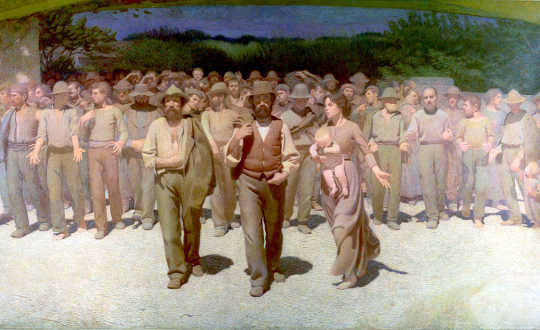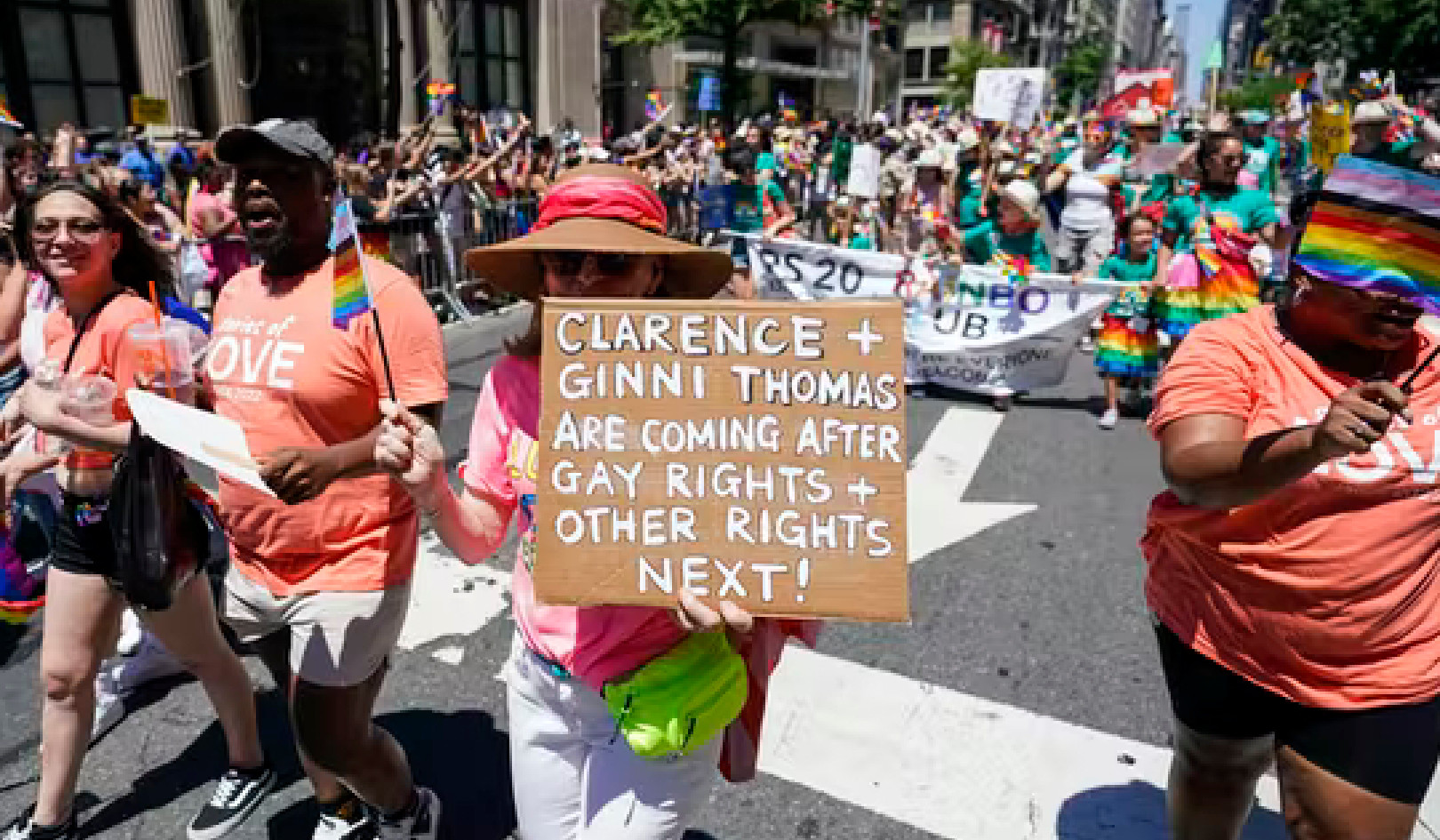 Il Quarto Stato (1901) av Giuseppe Pellizza da Volpedo.
Il Quarto Stato (1901) av Giuseppe Pellizza da Volpedo.
If we didn’t realize that 2016 was the year of upheaval before November 8, we certainly do now. Brexit, which seemed hard enough to digest, was merely the amuse bouche prior to the red meat of Donald Trump’s victory in the US presidential election.
Dessert came on December 4, with the constitutional referendum in Italy, which saw off the country’s moderate prime minister, Matteo Renzi.
Expect 2017 to bring strong electoral rewards for Geert Wilders in the Netherlands, Marine Le Pen in France and the AfD in Germany. There seems to be a global trend – but of what? Wherever we look, the sans-culottes are storming the trendy neighborhoods of the biens-pensants, but is there a wider pattern? (Editor's Note: sans-culottes/without pants; biens-pensants/well-wishers)
Broadly speaking, there are two separate attacks on an apparently settled order – one from within, one from without. Neither has a clear agenda, and each is more oppositional than constructive. It is therefore all the more important to understand what they oppose.
They are both reactions against a liberal ideal that has been in the ascendant, enabled by technology, which champions society characterised by high connectivity. It’s a vision of a society in which everyone has lots of weak – usually transactional – ties with lots of people across different networks that are easy to pick up and put down. This liberal order rests on a global view that freedom – social and economic – generates prosperity and tolerance. Who could oppose that? Well, it turns out that plenty of people can.
Change from within
One is a broadly radical group which buys into the liberal vision while resisting details of its implementation. Many of its affiliates in the UK have lined up behind Jeremy Corbyn, who increased his mandate as leader of the Labour Party in 2016. They may also be associated with the Green Party, or the Occupy movement, or Podemos or Syriza, or Bernie Sanders in the US. Their understanding of politics diverges from the 20th-century notion of political action framed by relatively firm ideology and specific institutions (such as political parties and trade unions) working within a well-understood parliamentary or representative framework.
Enamoured with neither the framework nor their representatives within it, the radicals see politics as a type of self-expression, while social media orients them towards other individuals and away from institutions. The internet is a key tool: it renders them visible to each other and makes political action at scale simpler to undertake. These are people who tend towards internationalism and want to expel corruption from the liberal order, not to overturn the liberal order itself.
Some are driven by the failure to deliver prosperity following the financial crash, some by a perception that certain groups are disadvantaged within liberalism – women, for example – which makes identity politics seem attractive. Others are driven by environmental concerns, or by a deep hatred of capitalism. The politics of this group is not particularly stable – and has been characterised by Helen Margetts and colleagues as “chaotic pluralism”.
Tearing down the tent
The second “movement” is very different: neither technologically enabled nor self-consciously organised – and rooted in a feeling of being invisible to urban sophisticates and opinion-formers. These are the Brexit voters, people willing to have a punt on Trump, Le Pen, AfD or UKIP. They feel vulnerable in open economies – and polling shows their opposition to globalisation, free markets, big business, inequality, technology and the internet, immigration, multiculturalism, social liberalism, welfare, political correctness, greenery and feminism.
This group is united by a rejection of the connected liberal ideal, preferring a more traditional arrangement of people with fewer, stronger ties to a smaller number of others – ties that are not necessarily chosen and which are not necessarily easily removable. It is a local view,. It is focused less on prosperity than on identity, belonging and making the world familiar, navigable and comprehensible for citizens. They reject the liberal consensus, the networked individual, the gig economy and the constant need to reinvent oneself in a dynamic global market. Despite some shared goals, these two groups will find it hard to work together.
What rough beast?
One set of borderline racists, variously known as the alt-right or Génération Identitaire, attempts to straddle this divide. They align themselves with outsider populists, such as Trump and Le Pen, while borrowing the methods and technologies of the radicals.
But despite their supposed love of homeland and racial purity, they still look more like a load of internationalist millennials talking among themselves. They attempt to defend the basis of the liberal ideal against a supposed threat from other cultures (they are united by Islamophobia, for example). At the same time, they indulge in the joys of that quintessentially 21st-century techno-pastime: “trolling”. They are part of the chaotic pluralism – and surely cannot speak for redundant steelmen in Pittsburgh or rural Catholics in Poland.
So the liberal order is under threat from two directions. Failure to adapt will be catastrophic, as nobody has much of an idea what to replace it with – if Donald Trump governs like the populist he seems, we can expect him to eschew tough decisions while presiding over a ballooning government deficit. Accommodation with one group will exacerbate conflict with the other – if you accommodate UKIP, you alienate the Hampstead liberals, and vice versa.
The defence of the liberal order has for many years relied on the assertion that there is no alternative. True or not, this is not enough to sustain it – Project Fear, which painted scary pictures of the world under Brexit, Trump, et al, was a flop. A stronger defence is needed with cultural traction, not based merely on the prospect of buying off the discontented or scaring them back into the fold.
Turning inward is no easy option, as evidenced by Theresa May’s car-crash visit to India in November, where the business-friendly Indian prime minister, Narendra Modi – no mean player of the race card himself – turned out to be far less interested in trade than, guess what, the free movement of people.
The best had better stop lacking all conviction – as Yeats might have put it. They need to drum up some of that passionate intensity if mere anarchy is not to be loosed upon the world in 2017.
![]()
About The Author
Kieron O'Hara, Senior Research Fellow, University of Southampton
This article was originally published on The Conversation. Read the original article.
Related Books
at InnerSelf Market and Amazon
























